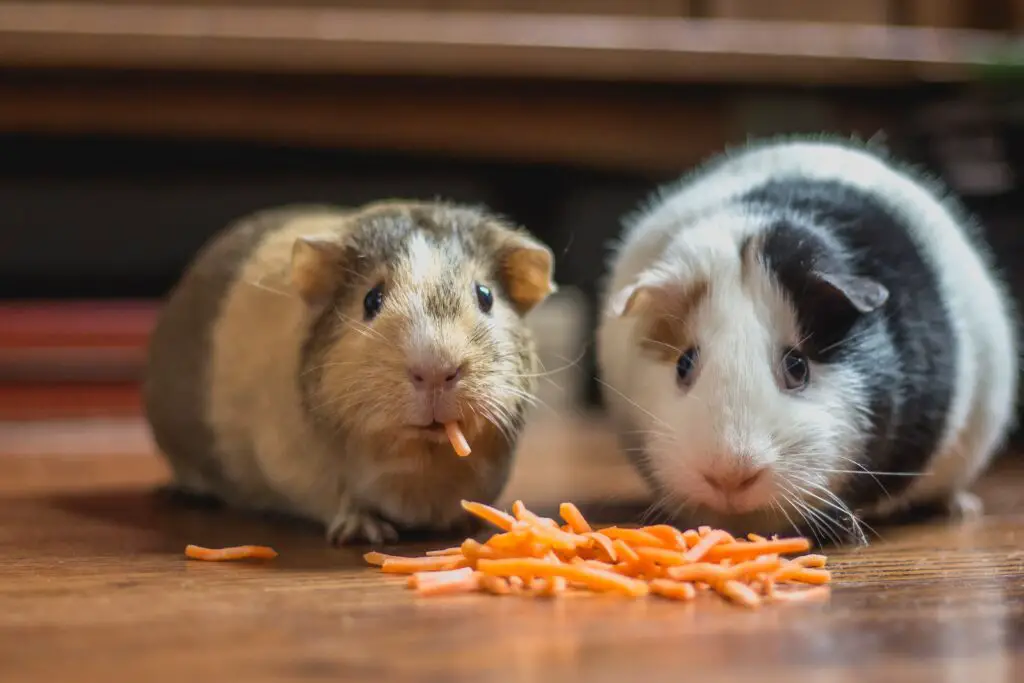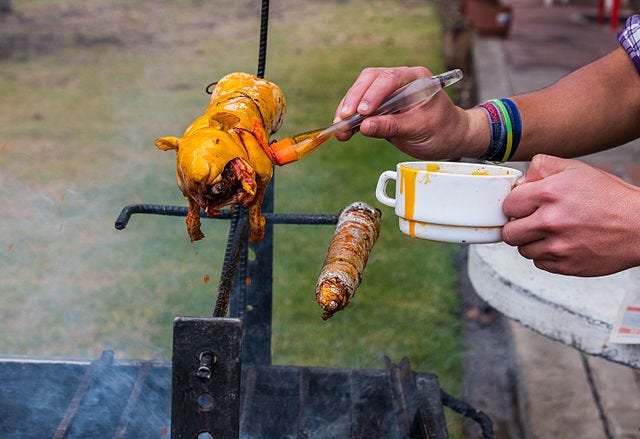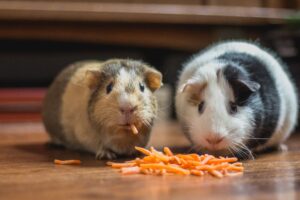
When I was a kid, my family adopted this strange little beast called a guinea pig. Wilbur would oink incessantly when we opened the fridge to give him lettuce. He’d stand on his hind legs and knock the cage lid for attention. He’d even run around in the non-fenced backyard and come back to the sliding door when he wanted in.
Plus, he was cute as beans.
Pretty crazy for what I thought was essentially a chubby tailless rat. But never in the few special years we had him did I ever think about eating him for dinner.
The history of guinea pigs
While many of us are familiar with guinea pigs as being the cute little oinking creatures popular with children in North America, the animal is actually pretty unique.
Firstly, they don’t exist naturally in the wild. That is, guinea pigs were domesticated and bred for meat for thousands of years. In 2010, some studies were done to trace the origin of the animals.
Their conclusion?
Guinea pigs’ ancestors were likely a species of cavies known as C. tschudii, an animal still found across South America in the wild.
And just in case you think they’re a more recent phenomenon of breeding, researchers think guinea pigs were first domesticated for food by indigenous people in the Andes around 7,000 years ago! There’s even evidence of statues showing ancient people in these areas worshipped them among other animals.
And then came the Europeans in the 1500s.
Spanish, Dutch, and English explorers/brutal conquerors started taking guinea pigs back to their countries to trade during this time.
The animals were an instant hit — although not as food.
The aristocracy thought these cute little alienesque creatures were amazing, and they quickly become the next “must-have” for anyone with enough money. Even Queen Elizabeth I was known to have a guinea pig as a pet.
From there, people bred the cute little creatures and they eventually ended up as popular pets across the Western world.
Why are they called guinea pigs or cavies?
Maybe you’re more used to guinea pigs being called Ariel or Cookie or Ginger, but sadly, that’s not their common nor scientific name.
I’m also sure most of you can guess guinea pigs aren’t related to pigs. But oddly enough, they’re not from Guinea in Africa, or Guyana either. In reality, the origin of the name guinea pigs isn’t exactly known for sure.
There are a few theories of course.
Some posit the word “guinea” in Europe used to refer to things from far away. That and the trademark oinking noise guinea pigs make might’ve led to the name combination.
A debunked theory states they’re called guinea because an English gold coin of the same name was supposedly the cost of one guinea pig. Yet, the animals were known from writings dating to 1554, and the coins weren’t created for another century.
As for being called cavies, the taxonomic name is Cavia porcellus, denoting the genus Cavia and the species of porcellus.
In South America, the animals are usually called cuy and are still raised for meat to this day! Lastly, there is one breed of large guinea pigs in North America called Cuy Criollo, which stands for giant guinea pig.
Guinea pigs as food today
I’m sure it might come to disappoint a few of you, but guinea pigs are still a common dish eaten today in certain parts of Peru, Bolivia, Ecuador, and Colombia.
The reason is threefold. Guinea pigs require far less space to raise, they breed like rabbits, and they (apparently) taste like dark chicken meat — as in, not bad at all.
In Peru alone, over 65 million guinea pigs are raised and consumed each year. Oink, indeed.
In fact, the animal is so popular and ingrained in Peru’s history, that a famous painting of The Last Supper in 1753 by artist Marcos Zapata hangs in the Cuzco Cathedral.
What was for dinner in this version?
You guessed it — cuy!
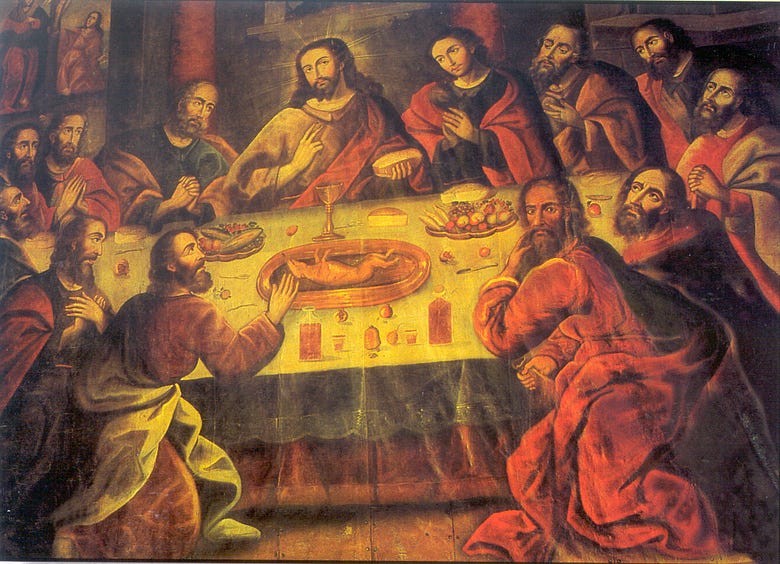
My own encounter with guinea pigs as a food
I never really thought of these animals as being food before, either. That is until one day around five years ago.
I attended a festival at a sort of hippie commune here in Taiwan and was absolutely delighted to see a large moat surrounding a miniature village and barn full of these fluffy little creatures.
It was only after settling in and talking to a few of the people that lived there that I realized the horrifying truth — they were raising them to be eaten.
But after the initial shock, I learned more about the practice and why they eat them. In the end, I settled my own emotions of disgust with a bit of realization.
This animal in particular has been raised and bred for thousands of years as mainly a food and animal to be praised and thanked for its gifts. The disgust lied with me and how I was raised, and with my experience of having Wilbur all those years ago.
I wasn’t in a position to judge these people for how they viewed an animal, and with that feeling, I chose to learn more about the practice and why it was so.
Pictures of cuy or guinea pig dishes
And in case you’re curious, here are a few pictures of famous dishes using guinea pig as the main ingredient.
User discretion is advised if you’re squeamish about the idea of eating guinea pigs.
A cuy or guinea pig dish in Ecuador:
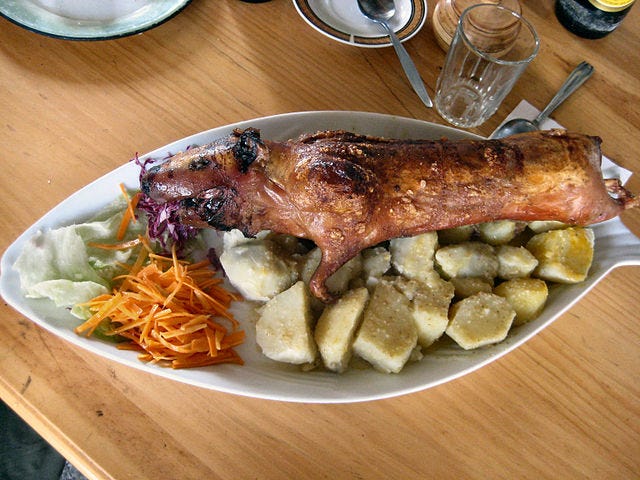
A Peruvian dish with cuy or guinea pig:
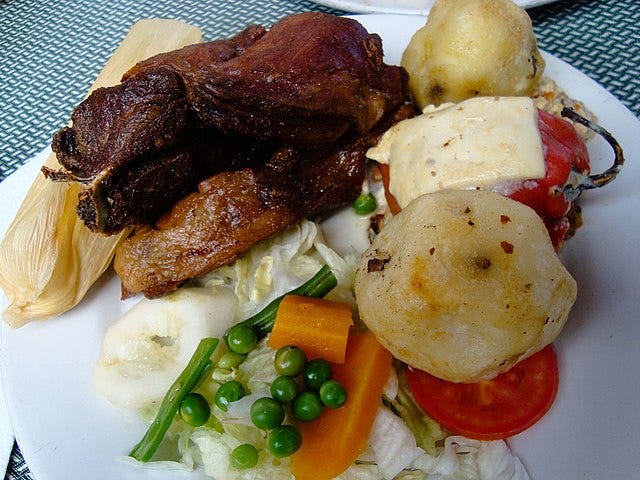
Another guinea pig dish in Peru:
Preparing a roast guinea pig or cuy in Ecuador:
I hope that wasn’t too disturbing to see for those of you used to guinea pigs being purely pets.
And just in case you’re wondering, no, I didn’t eat any of the guinea pigs — it simply wasn’t on the menu that day.
Head over here for more of my written shenanigans.


